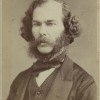
Scott C. Thompson, “On G. H. Lewes’s Problems of Life and Mind, 1874—79″
In Problems of Life and Mind (1874—79), George Henry Lewes posits his theory of “Scientific psychology,” which is founded on a synthesis between the objective study of the mind practiced in physiology and the subjective study of consciousness practiced in philosophy. Problems is an important text because it is one of the last quintessentially “Victorian” studies, a wide-ranging work produced before the full establishment of disciplinary boundaries. It combines a variety of discourses—including philosophy, physiology, psychology, evolutionary biology, and sociology—in order to establish a comprehensive methodology for the scientific study of consciousness. This entry positions Problems into its nineteenth-century psychological and philosophical tradition, as understood by Lewes; provides a summary of the overarching argument of Problems; and outlines the contributing sub-claims made in each of its discrete series.
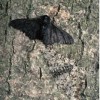
Nathan K. Hensley and John Patrick James, “Soot Moth: Biston Betularia and the Victorian End of Nature”
The darkened form of the common peppered moth, biston betularia f. carbonaria, known colloquially as the “soot moth,” was virtually unknown in England prior to 1800. The first reliable field specimen was collected outside of Manchester in 1848, plucked from the heart of Victorian England’s rapidly expanding coal economy. With their black abdomen and wings, these darkened morphs contrasted starkly with what had once been the more frequent form: a white-bodied moth lightly speckled with black and brown. As scientific studies now show, the black morph appeared as a result of industrial manufacture, first around major production centers and later around London. This article traces those studies to argue that the emergence of this particular form of melanistic moth signals a sharp pivot in Britain’s environmental history: its appearance augurs a new fossil modernity, in which coal replaces wood and animal fats as the primary source of English energy, and as stored sunlight, archived as coal, takes center stage as the driver for an endless steam-powered project of worldmaking. Tracing studies of “industrial melanism” to its origins at the beginning of this extractive, fossil-fueled modernity helps us see the soot moth’s emergence as a watershed moment in the history of life and a new chapter in humankind’s relationship to the category of nature.
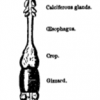
Anna Henchman, “Charles Darwin’s Final Book on Earthworms, 1881”
This article focuses on the publication of Darwin’s final book (1881) in the context of Darwin’s larger attempts to resist the habitual anthropocentrism of human beings. It begins with Darwin’s discussion of animal cognition and the senses of worms. It concludes with his emphasis on the significant effects worm digestion has on the landscape and the fertility of the earth. The article links Darwin’s Worms Edwin Abbott’s 1884 novella Flatland, arguing that both texts are engaged in dismantling human perceptions that stem from possessing a highly visual brain, and that both throw doubt on the belief that a single objective world exists independent of particular observers.
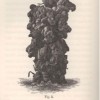
Bryan B. Rasmussen, “Invertebrate Psychology before and after Darwin”
In his B Notebook on Transmutation (1837-38), Charles Darwin speculated that the “introduction of man” on the evolutionary scene was “nothing” compared to the insect, which he considered “the first thinking being.” More than any other class of life in the eighteenth and nineteenth centuries, insects and other invertebrates raised questions about the origins of mental experience and about the relationship between human and nonhuman nature. Their minds represented scientific insight at its limits, where traditional modes of observation and empirical experiment gave way to less certain tools of analogy and thought experiment. Darwin’s Origin of Species (1859) provides a useful historical touchstone for the evolution of these analogies and thought experiments, having constrained the field of plausible analogy from one that included physiology, philosophy, and theology, to the central analogy of common ancestry, or the shared evolutionary history of organisms. However, while Darwin’s theory of descent may have displaced other analogies, it did not replace them, and well into the late-nineteenth and early-twentieth centuries, invertebrate minds continued to inspire a variety of both novel and relic assumptions and methods for examining mental affinities with our spineless distant cousins.
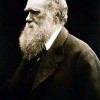
Nancy Armstrong, “On Charles Darwin’s The Descent of Man, 24 February 1871″
The Descent of Man, and Selection in Relation to Sex (1871) lays out how the principle of sexual selection could produce the splendid variety of animal life forms. This was Darwin’s way of explaining how human beings descended from animals. More to my point, however, this was Darwin’s way of accounting for the variations required before his principle of natural selection could promote some forms of life at the expense of others. Without the concept of “variation,” the theory of natural selection he proposed in The Origin of Species (1859) would not have been all that different from those of his competitors, save Alfred Russell Wallace. Nor could Darwin’s theory of evolution have achieved the extraordinary explanatory power it did. The Descent invites us to rethink this concept outside the gendered binaries of Victorian thought, so that it can challenge the primacy of natural selection.
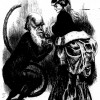
Jonathan Smith, “The Huxley-Wilberforce ‘Debate’ on Evolution, 30 June 1860”
The “debate” over evolution between T. H. Huxley and Bishop Samuel Wilberforce at the 1860 meeting of the British Association for the Advancement of Science in Oxford is an iconic story in the history of evolution and, indeed, in the history of the conflict between science and religion, second only to Galileo’s troubles with the Vatican. Huxley, the traditional account has it, vanquished Wilberforce by responding to an insulting question about his own ancestry with a masterful rejoinder that exposed the Bishop’s ignorance of science and ungentlemanly behavior. Historians have shown that this traditional account is biased and distorted, a construction many years after the fact by the Darwinians and their allies, yet it continues to live on, even in literary studies. Reconstructing the Huxley-Wilberforce encounter, the contexts in which it took place and what is and is not known about it, yields an understanding of the relationship between religion and science in the Victorian period that is fuller and more complex than the traditional “conflict” model.
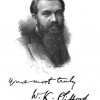
Daniel Bivona, “On W. K. Clifford and ‘The Ethics of Belief,’ 11 April 1876”
The mathematician W. K. Clifford was the youngest and possibly most controversial member of the Metaphysical Society, a group originally formed by Alfred Lord Tennyson and some close friends. Lasting from 1869 to 1880, the Society ultimately brought together a great variety of intellectuals, writers, philosophers, scientists, poets, journal editors, politicians, and Church figures of the era for vigorous debates on metaphysical topics. A pioneering promoter and translator of the non-Euclidian geometer Riemann, Clifford anticipated Einstein’s discovery that gravity was not a mysterious force of bodies but an effect of curved space, but it was his withering criticism of metaphysical claims before the Metaphysical Society – in particular, his attack on the morality of believing on insufficient evidence, an argument which was delivered two years after he first joined the group and later published as the essay “The Ethics of Belief” – that marked him as the most controversial proponent of the agnostic position in the late Victorian period. When he died at the young age of 33 in 1879, Clifford left a legacy of important unpublished scientific work and a number of impressive published essays in which he offered both a very compelling critique of the ethics of metaphysical commitments and a powerful argument, inspired by Darwin’s Descent of Man, in favor of the claim that ethics derive from evolutionary history rather than descending from an immaterial God.
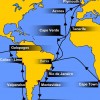
Ian Duncan, “On Charles Darwin and the Voyage of the Beagle”
The event now known as “the voyage of the Beagle” comprises Charles Darwin’s circumnavigation as ship’s naturalist on the second of three surveying voyages by H.M.S. Beagle; the writings published as his first book, the Journal of Researches; and the genesis of his theory of evolution by natural selection. Writing between regimes of world-knowledge, Darwin mediates scientific observation through the language of aesthetics, and seeks to understand the convergence of disparate scales of geological and human history.
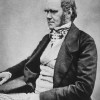
Cannon Schmitt, “On the Publication of Charles Darwin’s On the Origin of Species, 1859″
The publication of Charles Darwin’s On the Origin of Species (1859) often serves as shorthand for the first appearance of evolutionary theory. But Darwin wrote at a time when several different theories of evolution had already been proposed. Moreover, his own version of evolution had been known to select colleagues well before 1859 and became available to a wider public in 1858. Appreciating the nature of Darwin’s contribution and the extent of his success requires understanding this contemporary context as well as something of the subsequent fate of the Origin’s key idea: natural selection.
